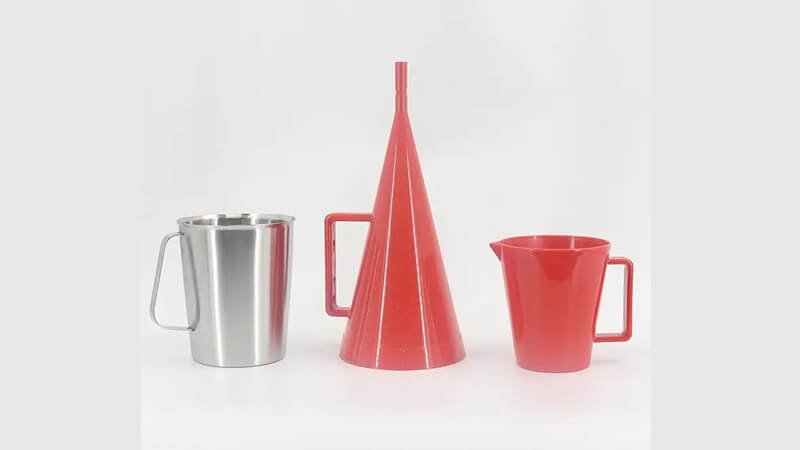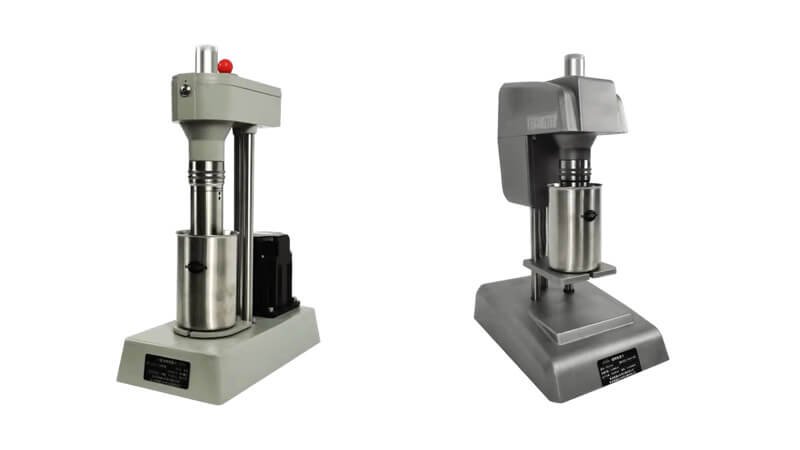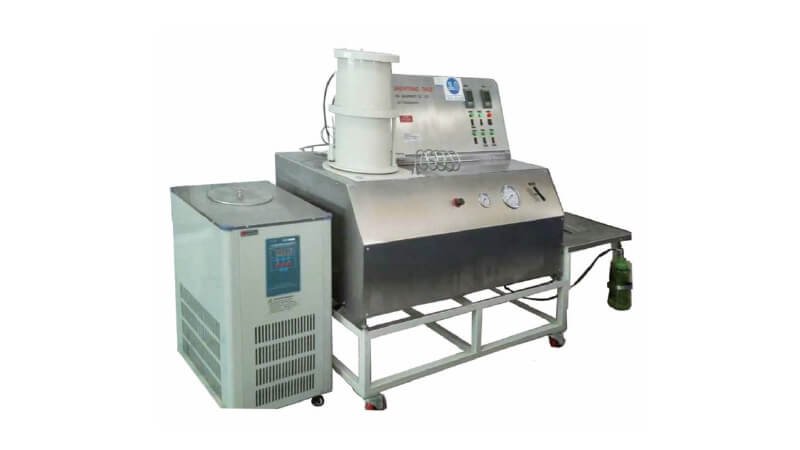Struggling with drilling complications? Unpredictable drilling fluid behavior can lead to stuck pipes, poor hole cleaning, and increased costs, derailing your operations. We need to understand this.
A rheology test for drilling fluid measures its flow and deformation properties. This helps predict its performance downhole, ensuring efficient and safe drilling operations. Martests provides tools for these vital tests.
Drilling fluid, or "mud," is critical in oil and gas exploration. Its behavior, or rheology, directly impacts how well we can drill a well. As someone who manufactures viscometers at Martests, I've seen firsthand how crucial these tests are for our customers, particularly those supplying to drilling operations. They rely on accurate rheological data to make informed decisions. Without these tests, you're essentially drilling blind, risking equipment and efficiency. Let's look at why these tests are so important and what they involve.
Why is Ensuring Effective Hole Cleaning a Key Purpose of Rheology Testing?
Is your drilling operation plagued by cuttings settling in the wellbore? Poor hole cleaning leads to stuck pipe, increased torque and drag, and inefficient drilling. This is a serious issue.
Rheology testing helps design drilling fluids with optimal viscosity and gel strength to effectively lift cuttings out of the hole, preventing accumulation and ensuring smooth operations.
One of the primary jobs of drilling fluid is to carry rock cuttings, generated by the drill bit, from the bottom of the hole to the surface. The fluid's ability to do this effectively, known as hole cleaning efficiency, is heavily dependent on its rheological properties. Specifically, we look at parameters like plastic viscosity (PV) and yield point (YP). A fluid with an appropriate YP will be able to suspend cuttings when circulation stops, preventing them from settling and causing problems like stuck pipe. During circulation, the fluid's viscosity profile across different shear rates (as measured by a rotational viscometer) determines its carrying capacity.
At Martests, we often discuss with clients, including purchasing managers from distributors who serve drilling companies in the Middle East, how our viscometers help them fine-tune these properties. For example, if the YP is too low, cuttings will fall. If it's too high, it can lead to excessive pump pressures.
| Rheological Parameter | Impact on Hole Cleaning | Desired State |
|---|---|---|
| Yield Point (YP) | Ability to suspend cuttings when static | Sufficiently high |
| Plastic Viscosity (PV) | Resistance to flow once movement starts; affects carrying | Not excessively high |
| Gel Strengths | Ability to suspend cuttings during non-circulating periods | Progressive, not fragile |
How Does Rheology Testing Help Determine Pumping Pressure Requirements?
Facing unexpectedly high pump pressures or, conversely, insufficient flow? Incorrectly estimated pressure losses can lead to equipment failure or inadequate hydraulic horsepower at the bit.
Rheology tests provide data to accurately calculate frictional pressure losses in the drill string and annulus. This allows for correct pump sizing and optimization of hydraulic horsepower.
Pumping the drilling fluid down the drill string and back up the annulus requires energy. The pressure required from the mud pumps depends significantly on the fluid's rheology. Higher viscosity fluids, or those with high gel strengths, will generally lead to greater frictional pressure losses as the fluid moves through pipes and constrictions. Rheological models, derived from viscometer readings at various shear rates, are essential for predicting these pressure losses.
Our clients, including some in developing countries who are keen on cost-effective solutions, use data from our Martests rotational viscometers to feed into hydraulic simulation software. This allows them to predict the standpipe pressure needed for a given flow rate and well geometry. Overestimating pressure requirements means oversized, inefficient pumps. Underestimating can lead to insufficient flow for hole cleaning or bit hydraulics. Accurate rheological data helps optimize the entire hydraulic system, ensuring the bit gets enough power to drill efficiently while keeping pump pressures within safe operational limits. For example, the Fann Model 35 viscometer is a standard in the industry, and we produce comparable units.
| Fluid Property | Influence on Pump Pressure | Consequence of Miscalculation |
|---|---|---|
| Plastic Viscosity | Directly impacts frictional losses in turbulent flow regimes | Inaccurate pressure prediction |
| Yield Point | Contributes to pressure needed to initiate flow and overcome static friction | Under/over-pressurization |
| Flow Behavior Index (n) | Affects pressure loss calculations for non-Newtonian fluids | Incorrect hydraulic modeling |
What Role Does Rheology Testing Play in Assessing Fluid Stability and Solids Suspension?
Are you experiencing issues like barite sag or inconsistent fluid properties over time? Unstable fluids can compromise drilling safety and efficiency by failing to maintain their desired characteristics.
Rheology tests, especially gel strength measurements, indicate a drilling fluid's ability to suspend weighting materials (like barite) and drilled solids, preventing sag and maintaining density.
Drilling fluids are often weighted with materials like barite to control downhole pressures. It's vital that these solids remain suspended uniformly throughout the fluid, both during circulation and when static (e.g., during connections). If the weighting material settles out, a phenomenon known as "barite sag," it can lead to dangerous variations in mud density downhole, potentially causing well control issues.
Rheology testing, particularly the measurement of gel strengths (initial and 10-minute gels), provides a direct indication of the fluid's ability to suspend these solids. Good, progressive gel strengths mean the fluid will form a gel structure quickly when flow stops, holding particles in suspension. However, excessively high or "brittle" gels can make it difficult to restart circulation. I've had discussions with experienced buyers like Jacky from Italy, who understands that his customers need reliable gel strength data to prevent such costly problems. Our Martests viscometers provide accurate readings for these critical parameters, ensuring the fluid's stability can be properly assessed and maintained.
| Measurement | What it Indicates About Stability | Importance |
|---|---|---|
| Gel Strength (10s) | Initial ability to suspend after short stops | Prevents immediate settling |
| Gel Strength (10min) | Longer-term suspension capacity | Critical for connections, trips |
| YP/PV Ratio | Often used as an indicator of overall stability | Helps in diagnosing sag potential |
What Does Funnel Viscosity Tell Us About Drilling Fluid?
Need a quick, on-site fluid check but finding it hard to interpret? The Marsh funnel provides a simple number, but its limitations can mislead if not understood correctly.
Funnel viscosity, measured using a Marsh funnel, gives a quick, qualitative indication of drilling fluid consistency. It's a simple field test but not a true rheological parameter.

The Marsh funnel is a very common piece of equipment on any rig site. It's a simple cone-shaped funnel with a fixed orifice at the bottom. The test involves measuring the time it takes for a specific volume (usually one quart or one liter) of drilling fluid to flow out of the funnel. This time, reported in seconds per quart (or liter), is known as the funnel viscosity.
While it's a quick and easy test, it's important to understand its limitations. Funnel viscosity is a single-point measurement influenced by both the fluid's viscosity and its density. It doesn't provide information about the fluid's behavior at different shear rates, nor does it give distinct values for yield point or plastic viscosity. Therefore, it's mainly used as a qualitative indicator for monitoring trends or making rapid comparisons on site. For instance, if the funnel viscosity suddenly increases, it might signal that the fluid has thickened due to drilled solids contamination or a chemical reaction. However, to truly understand why it changed and what specific rheological properties are affected, a rotational viscometer test is necessary. I often explain to customers that while the funnel is useful for quick checks, for precise control and problem-solving, they need the detailed data our Martests rotational viscometers provide.
| Feature | Description | Limitation |
|---|---|---|
| Test Principle | Time for a fixed volume to flow through an orifice | Single point, influenced by density |
| Output | Seconds per quart/liter | Not a true viscosity, qualitative |
| Usage | Quick field check, trend monitoring | Cannot determine YP, PV, or gel strengths |
| Equipment Cost | Very low | Limited diagnostic capability |
How is a Rotational Viscometer Used in Drilling Fluid Rheology?
Are you relying solely on funnel viscosity and missing critical fluid insights? This can lead to poorly optimized mud properties and potential drilling problems.
A rotational viscometer measures drilling fluid viscosity at multiple shear rates, providing key parameters like Plastic Viscosity (PV), Yield Point (YP), and gel strengths for detailed rheological characterization.

The rotational viscometer is the workhorse for detailed drilling fluid rheology testing. At Martests, we manufacture these instruments, which typically follow API (American Petroleum Institute) specifications. The instrument works by rotating a bob or spindle within a stationary cup containing the drilling fluid sample, or vice versa. The torque required to rotate the bob at various set speeds (which correspond to shear rates) is measured. These torque readings (often called dial readings) are then used to calculate the fluid's rheological properties.
Commonly, readings are taken at 600, 300, 200, 100, 6, and 3 RPM. From these, we can calculate:
- Plastic Viscosity (PV): Represents the viscosity of the fluid when extrapolated to an infinite shear rate. It's influenced by the concentration, size, and shape of solids.
- Yield Point (YP): Represents the electro-chemical or attractive forces in the fluid under flow conditions. It's crucial for cuttings suspension.
- Gel Strengths: Measured by the maximum dial reading observed after the fluid has been static for a short period (e.g., 10 seconds and 10 minutes).
This data allows mud engineers to understand how the fluid will behave under different conditions in the wellbore. Our customers, many of whom are distributors specializing in lab instruments, value the reliability and customizable logo options of our Martests viscometers for these critical API tests.
| Rotational Speed (RPM) | Typical Use in Calculation | Shear Rate Implication |
|---|---|---|
| 600 RPM | Basis for PV, YP calculation | High shear |
| 300 RPM | Basis for PV, YP calculation | Moderate-high shear |
| 6 RPM | Input for low-shear YP, gel strength | Low shear |
| 3 RPM | Input for low-shear YP, gel strength | Very low shear |
Why are Rheological Models Important in Drilling Fluid Analysis?
Are raw viscometer readings enough for complex hydraulic calculations? Simple data points might not fully describe how the fluid behaves across the entire shear rate spectrum in the well.
Rheological models (e.g., Bingham Plastic, Power Law, Herschel-Bulkley) use viscometer data to mathematically describe fluid flow behavior, enabling more accurate predictions of pressure losses and hydraulic performance.
While direct readings from a rotational viscometer give us PV, YP, and gel strengths, drilling fluids are typically non-Newtonian. This means their viscosity changes with shear rate. To accurately predict their behavior in the dynamic conditions of a wellbore (e.g., flow in narrow annuli or through bit nozzles), we use mathematical rheological models. These models provide a continuous relationship between shear stress and shear rate.
Some common models used for drilling fluids include:
- Bingham Plastic Model: A simple two-parameter model (YP and PV). It assumes the fluid requires a minimum stress (YP) to start flowing and then behaves like a Newtonian fluid with viscosity PV.
- Power Law Model: Describes fluids where viscosity changes with shear rate, characterized by a flow behavior index (n) and a consistency index (K).
- Herschel-Bulkley Model: A three-parameter model that combines aspects of Bingham Plastic and Power Law, incorporating a yield stress, consistency index, and flow behavior index. This is often the most accurate for drilling fluids.
Data from our Martests viscometers, especially the multi-speed readings, provide the input needed to determine the parameters for these models. This allows engineers to perform more sophisticated hydraulic simulations, leading to better well design and operational efficiency.
| Rheological Model | Key Parameters | Best Suited For |
|---|---|---|
| Bingham Plastic | YP, PV | Simpler fluids, initial estimations |
| Power Law | K, n | Shear-thinning or shear-thickening fluids without yield |
| Herschel-Bulkley | Yield Stress, K, n | Most drilling fluids, offers greater accuracy |
When is High-Temperature High-Pressure (HTHP) Rheology Testing Necessary?
Are your surface rheology measurements misleading for deep, hot wells? Downhole conditions can drastically alter fluid properties, making surface data unrepresentative and risky.
HTHP rheology testing simulates downhole conditions of high temperature and pressure, providing more accurate fluid behavior data crucial for deep, challenging, and HPHT (High-Pressure High-Temperature) wells.

Standard rheology tests are typically conducted at ambient or slightly elevated temperatures (e.g., 120°F or 150°F) and atmospheric pressure. However, in many drilling operations, especially in deep wells or geothermal drilling, the drilling fluid is exposed to significantly higher temperatures and pressures downhole. These conditions can dramatically alter the fluid's rheological properties. For example, high temperatures can degrade polymers, affecting viscosity and fluid loss control, while high pressures can also influence viscosity.
This is where HTHP viscometers become essential. These specialized instruments can measure rheological properties under simulated downhole conditions. While Martests focuses on standard rotational viscometers, we understand the critical need for HTHP data in certain scenarios. Our customers who supply to operations drilling deep, hot wells often require fluids designed and tested to withstand these extreme environments. An HTHP test provides data that is far more representative of actual downhole performance, ensuring the fluid will perform as intended when it matters most. This is vital for preventing well control issues, optimizing hydraulics, and ensuring the overall success of challenging drilling projects.
| Condition | Potential Impact on Drilling Fluid Rheology | Why HTHP Test is Needed |
|---|---|---|
| High Temperature | Polymer degradation, viscosity reduction, gel changes | To assess thermal stability and true downhole viscosity |
| High Pressure | Can increase viscosity (less common than temp effect) | To get combined effect with temperature on fluid behavior |
| Combined HTHP | Complex interactions affecting all rheological parameters | For accurate modeling in HPHT environments |
Conclusion
Rheology tests are vital for drilling fluid performance, impacting hole cleaning, pressures, and stability. Martests provides key instruments for these crucial, insightful measurements.


